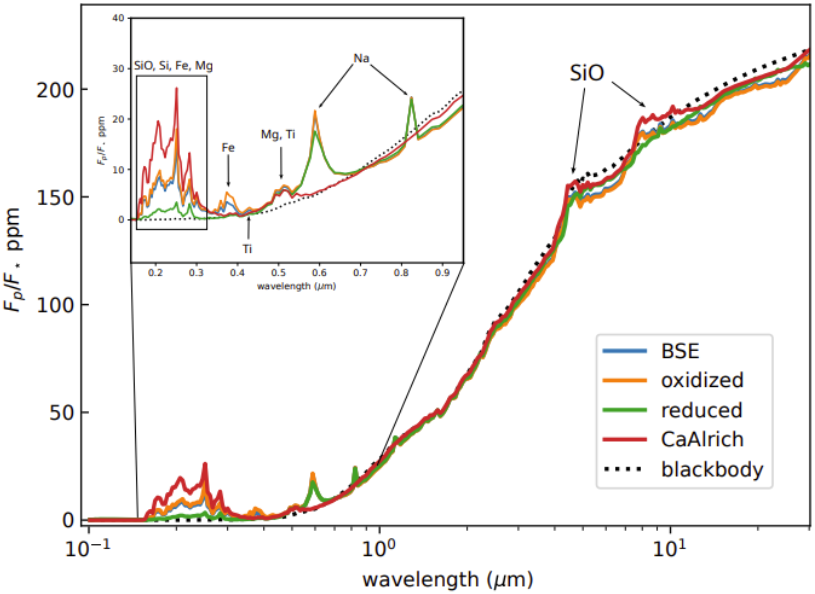Rocky exoplanets and their atmospheres

The discovery of exoplanets – planets orbiting stars other than the Sun – has heralded in a new field of research. Central to characterising these planets, of which there are now more than 5000 detected, is to better determine their composition. The group applies theoretical models based on the composition of the host star, together with mass-radius measurements of exoplanets to place constraints on their make-up (e.g., Wang et al. 2022). The launch of the James Webb Space Telescope in December, 2021, together with ground-based telescopes afford a new, detailed examination of the atmospheres of these planets. Our group, in collaboration with the Exoplanets and Habitability group, is involved with the modelling, characterisation and evolution of such atmospheres, and, in particular linking their composition to that of the planetary interior (e.g., Thompson et al. 2021; Bower et al. 2022). To this end, the group helped to develop the VapoRock code (Wolf et al. 2023) that calculates chemical equilibria in the system silicate liquid – gas, to predict the compositions of outgassed atmospheres. We also employ thermodynamic data, together with dynamical models to better predict the bulk composition, interior structure and architecture of such planets.
Researchers
- Fabian Seidler
- Maggie Thompson
- Dan Bower
- Haiyang Wang (now Assistant Professor at StarPlan, University of Copenhagen)
- Kaustubh Hakim (KU Leuven/Royal Observatory Brussels)